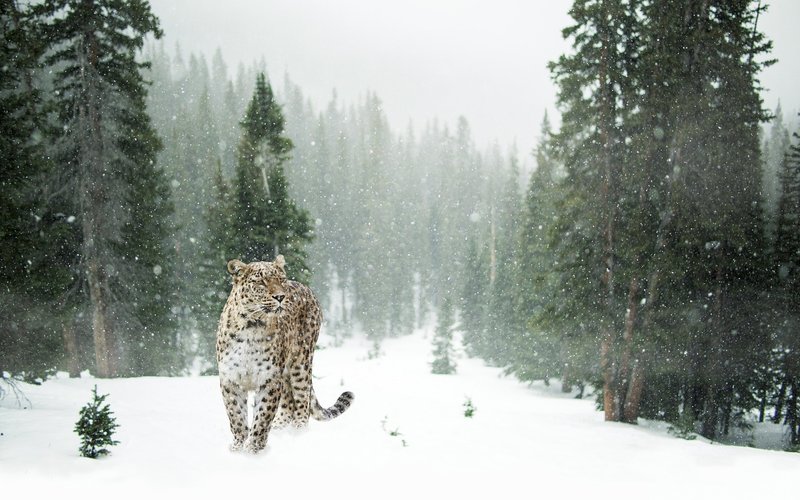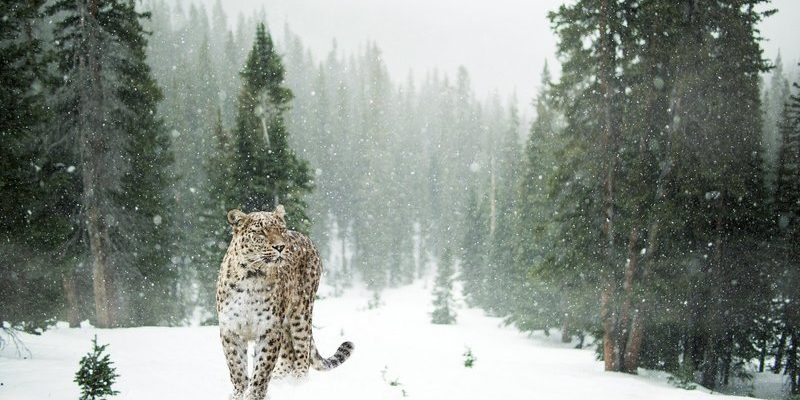
When you think about the ecosystem, it’s like a giant web. Each creature, plant, and even the terrain itself plays a part, connecting in ways that support the entire system. Snow leopards are at the top of this web, acting as predators that help maintain the population levels of their prey—like ibex and blue sheep—while also influencing the health of the entire ecosystem. It’s a fascinating dynamic, and understanding it reveals just how important these magnificent cats really are.
1. The Snow Leopard: A Quick Overview
Before diving into their ecological role, it’s essential to understand what snow leopards are all about. These big cats, known scientifically as *Panthera uncia*, inhabit some of the most remote and challenging terrains on Earth. They’re primarily found in the mountain ranges of Central and South Asia, including the Himalayas and the Tibetan Plateau.
Snow leopards are built for survival in these harsh conditions. Their thick fur keeps them warm, while large paws act like natural snowshoes, allowing them to traverse steep and snowy landscapes. They also possess remarkable eyesight, which helps them spot prey from great distances.
Here’s the thing: snow leopards are elusive creatures. They prefer solitude and are seldom seen by humans, which adds to their mystique. The combination of their stunning looks and secretive nature makes them a symbol of the wild—a powerful reminder of the beauty and fragility of mountainous ecosystems.
2. Predators at the Top of the Food Chain
Snow leopards occupy the top tier of their food chain. As apex predators, they have a significant influence on the populations of other animals. They primarily hunt ungulates like ibex, wild sheep, and other species that inhabit their mountainous homes. By controlling these prey populations, snow leopards help prevent overgrazing, which can lead to habitat degradation.
When prey numbers are manageable, it means the vegetation in the ecosystem can thrive. Healthy plant life supports various other species, from smaller herbivores to birds and insects. This interplay shows that snow leopards help maintain a balance that’s crucial for the health of their environment.
On a broader scale, the absence of snow leopards can lead to overpopulation of their prey species. As these animals multiply unchecked, they can overgraze their habitats, leading to erosion and loss of plant life. Sadly, this imbalance can ripple through the ecosystem, demonstrating just how vital snow leopards are to maintaining ecological harmony.
3. Habitat Preservation and Biodiversity
Snow leopards serve as indicators of habitat health. When scientists study these cats and their environments, they can gain insights into the overall wellbeing of the ecosystem. Because snow leopards require large territories and specific conditions to thrive, their presence often indicates a healthy and diverse ecosystem.
Moreover, protecting snow leopards and their habitats can help preserve the entire range of biodiversity in those areas. Conservation efforts aimed at safeguarding these big cats can lead to the protection of various other species that share their environment.
Here’s a personal takeaway: by working on snow leopard conservation, we’re not just saving a beautiful animal; we’re also safeguarding the countless creatures and plants that coexist in these fragile ecosystems. It’s a multi-faceted approach that highlights the interconnectedness of life.
4. Human Impact on Snow Leopard Populations
Unfortunately, snow leopards are faced with numerous threats due to human activities. Habitat loss, poaching, and retaliatory killings from livestock herders are just a few challenges these magnificent cats encounter. As human populations expand into their territories, snow leopards often find themselves squeezed into smaller habitats, making hunting and survival increasingly difficult.
Poaching for their beautiful fur is also a significant concern. Despite international efforts to protect snow leopards, illegal hunting continues to pose a threat. This not only diminishes their populations but also disrupts the ecological balance they help maintain.
When conflicts arise between snow leopards and humans, it can have devastating consequences, not just for the big cats, but for entire ecosystems. Protecting these majestic creatures means implementing conservation strategies that consider both wildlife and human interests.
5. Conservation Efforts: Making a Difference
There’s hope, though! Many organizations and governments are actively working to conserve snow leopards and their habitats. Programs often focus on community involvement, educating locals about the ecological importance of these cats and the benefits of coexistence.
One successful approach has been the establishment of protected areas where snow leopards can roam freely without the threat of poaching or habitat destruction. These sanctuaries provide a safe haven and allow for the natural balance of the ecosystem to thrive.
Additionally, initiatives that promote sustainable practices in livestock farming can help reduce conflicts. For example, using guard animals or implementing various deterrents can keep livestock safe from snow leopards, allowing both species to exist harmoniously. With these efforts, communities can protect both their livelihoods and the stunning wildlife that belongs in those mountains.
6. The Role of Local Communities in Conservation
Local communities play a critical role in the conservation of snow leopards. When these communities understand the importance of these big cats and their impact on the ecosystem, they often become active participants in conservation efforts.
Creating programs that provide economic incentives for preserving wildlife, rather than hunting them, can lead to positive outcomes. For instance, eco-tourism can offer a sustainable income for local people while promoting the beauty of snow leopards and their habitats.
Moreover, communities that are involved in the conservation process become stewards of their environment. Educating children about the significance of snow leopards fosters a sense of pride and responsibility for the natural world. This connection can be powerful, ensuring that future generations continue to advocate for the protection of these incredible animals.
7. Conclusion: The Importance of Protecting Snow Leopards
In a world that often prioritizes immediate human needs, it’s easy to overlook the delicate balance of ecosystems. Snow leopards are more than just stunning creatures; they are fundamental to the health of their mountainous habitats. By maintaining prey populations and supporting biodiversity, snow leopards play a vital role in ensuring a sustainable future for their ecosystems.
As we strive to protect these majestic cats, we also commit to preserving the interconnected web of life that includes countless other species. The importance of snow leopards goes beyond their striking appearance; they remind us of the beauty and fragility of our planet. In protecting them, we invest in the health of an entire ecosystem—and ultimately, our shared future. So, let’s rally together to ensure these magnificent cats roam the mountains for generations to come.

